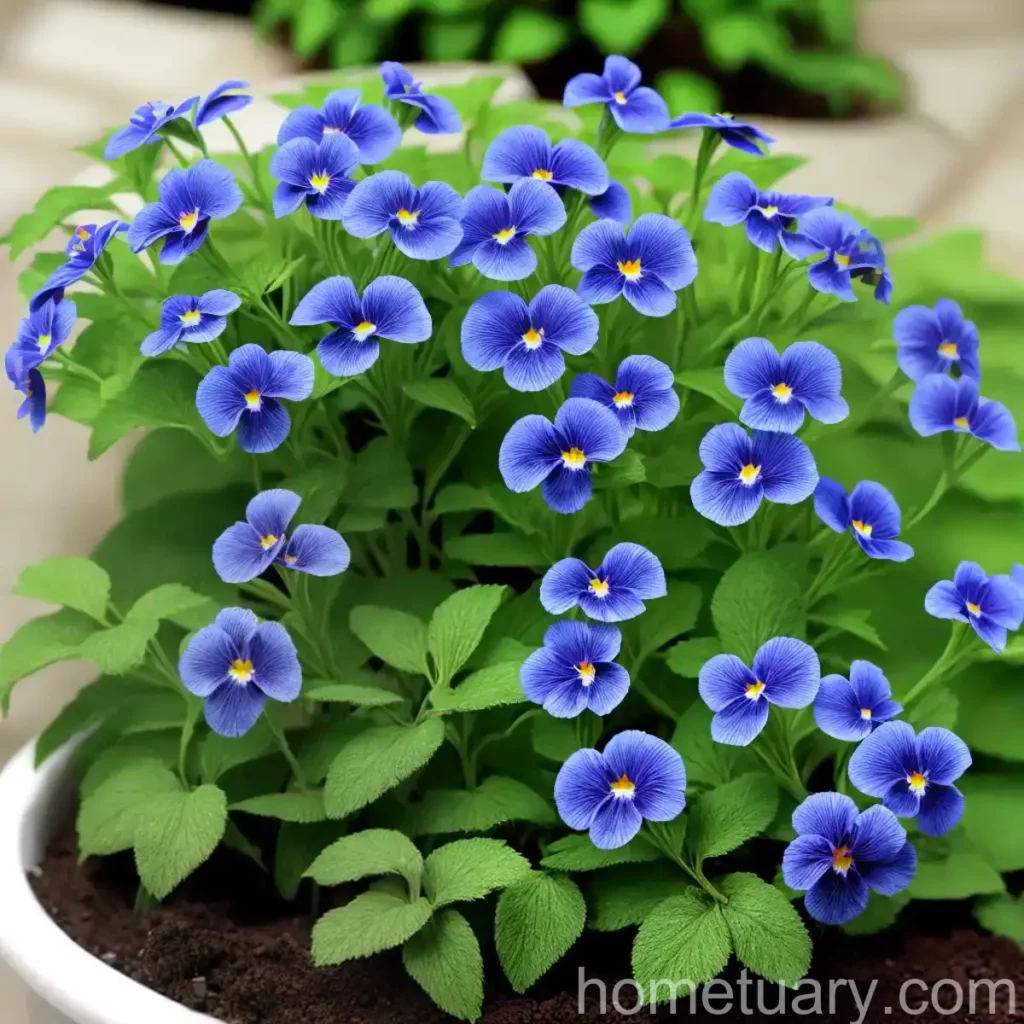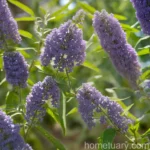Nemesia (Nemesia caerulea): A Comprehensive Guide
Plants add vibrancy and life to any space, and one such delightful plant is the nemesia (Nemesia caerulea). This charming plant, with its delicate flowers and easy-care nature, has gained popularity among gardeners and landscapers alike. In this comprehensive guide, we will explore the cultural aspects, uses, care requirements, propagation methods, common diseases, and more of the nemesia plant.
What is Nemesia (Nemesia caerulea)?
Nemesia, scientifically known as Nemesia caerulea, is a flowering plant that belongs to the family Scrophulariaceae. Originating from South Africa, this plant is revered for its colorful and fragrant flowers, making it an excellent choice for gardens, landscapes, and even containers.
Key Takeaways – Nemesia (Nemesia caerulea)
Before delving into the specifics of growing and caring for nemesia, let’s highlight key points about this delightful plant:
- Nemesia (Nemesia caerulea) is a flowering plant known for its vibrant and fragrant flowers.
- It is a versatile plant that can be used in gardens, landscapes, and containers.
- Nemesia requires well-draining soil, adequate sunlight, and regular watering for optimal growth.
- The plant is propagated through seeds or cuttings and is relatively easy to maintain with proper care.
- Nemesia is susceptible to certain diseases and pests, which can be managed with proper monitoring and maintenance.
Now that we have an overview of the nemesia plant, let’s explore its cultural, care, and maintenance aspects in detail.
Culture
Uses
Nemesia is valued for its versatility and aesthetic appeal, making it a popular choice for various horticultural purposes. Its uses include:
– Garden Borders: Nemesia adds a splash of color and fragrance to garden borders, enhancing the overall visual appeal.
– Container Gardening: Due to its compact size and prolific flowering, nemesia thrives in containers, making it a sought-after plant for balcony gardens and patio arrangements.
– Landscaping: Its low-growing and colorful nature makes nemesia an ideal choice for landscaping, where it can be used to create vibrant floral displays in parks, public gardens, and commercial landscapes.
Water
Proper watering is essential for the healthy growth of nemesia. While it prefers moist soil, it’s crucial to avoid waterlogging. The following guidelines can help ensure adequate moisture for your nemesia plants:
– Water the plants when the top inch of soil feels dry to the touch.
– Avoid excessive watering, as it can lead to root rot and other diseases.
– Mulching the base of the plant can help retain soil moisture, especially during hot and dry periods.
Sunlight
Nemesia thrives in well-lit areas and generally requires full to partial sun exposure for optimal growth and flowering. Adequate sunlight is crucial for the plant’s overall health and bloom production. When planting nemesia, consider the following sunlight requirements:
– Preferably position the plant in an area that receives at least 6-8 hours of direct sunlight per day.
– In hotter climates, partial shade during the intense afternoon sun can benefit the plant and prevent heat stress.
Fertilizer
Proper nutrition is key to maintaining the vigor and blooming potential of nemesia plants. Here are some key fertilizer guidelines for nemesia:
– Use a balanced, water-soluble fertilizer with a composition such as 10-10-10 or 20-20-20 to provide essential nutrients to the plant.
– Fertilize nemesia once a month during the growing season, following the manufacturer’s instructions for dilution and application.
Soil
Nemesia thrives in well-draining, fertile soil that provides a conducive environment for root growth and development. Consider the following soil requirements for nemesia cultivation:
– Use a lightweight, well-draining potting mix if growing nemesia in containers.
– In garden beds, amend the soil with organic matter such as compost to enhance its fertility and drainage properties.
– Aim for a slightly acidic to neutral pH level (6.0-7.0) for the soil, as nemesia prefers these soil conditions for optimal growth.
Pruning
Regular pruning of nemesia helps maintain its compact shape, encourages new growth, and prolongs the flowering period. Here are some essential pruning tips for nemesia:
– Deadhead faded flowers regularly to promote continuous blooming and prevent the plant from expending energy on seed production.
– Trim back any leggy or discolored stems to encourage bushier growth and improve the overall appearance of the plant.
Propagation
Nemesia can be propagated through both seeds and stem cuttings, providing gardeners with options to expand their nemesia collection or share the plant with others. Below are the propagation methods for nemesia:
– Seeds: Collect mature nemesia seeds from the spent flowers. Sow the seeds in a seed-starting mix and maintain adequate moisture and warmth for germination. Transplant the seedlings into individual containers or garden beds once they develop several true leaves.
– Stem Cuttings: Take 3-4 inch stem cuttings from healthy nemesia plants. Remove the lower leaves and dip the cut end in a rooting hormone powder. Plant the cuttings in a well-draining potting mix and keep them consistently moist until roots develop.
Container Popularity
The compact and colorful nature of nemesia has contributed to its popularity in container gardening. Whether used as a standalone feature or as part of mixed plant arrangements, nemesia thrives in containers and brings joy to any outdoor space. Its adaptability to container culture allows gardeners to get creative with their plant arrangements, making nemesia a highly sought-after plant for container gardening enthusiasts.
Common Diseases
Disease Diagnosis
Nemesia plants can be susceptible to certain diseases, and early identification is crucial for effective management. Common diseases that may affect nemesia include:
– Powdery Mildew: Characterized by a white, powdery growth on the leaves and stems, powdery mildew can weaken and distort the plant if left unaddressed.
– Botrytis Blight: This fungal disease causes brown spots and mold growth on the flowers and foliage, leading to their decay.
– Root Rot: Overwatering or poorly draining soil can lead to root rot, resulting in wilting, yellowing leaves, and overall decline of the plant.
Disease Control
Preventive measures and prompt intervention are key to controlling and managing diseases in nemesia plants. Implement the following strategies to prevent and address common diseases:
– Ensure proper air circulation around the plants to reduce humidity levels and inhibit the growth of fungal pathogens.
– Avoid overhead watering to minimize prolonged leaf wetness, which can contribute to disease development.
– Remove and dispose of any infected plant material to prevent the spread of diseases within the garden or landscape.
Common Pests
Nemesia plants are generally resilient to pests but may occasionally face infestations from common garden pests. Some pests that may affect nemesia include:
– Aphids: These small, sap-sucking insects can cause distortion of new growth and leaves, leading to weakened plant vigor.
– Spider Mites: Infestations by spider mites can result in webbing on the plant, stippled leaves, and a decline in overall plant health.
Botanist’s Tips
To ensure the successful growth and longevity of nemesia plants, consider the following expert tips:
– Provide consistent care and monitor the plant’s watering, sunlight exposure, and soil conditions to maintain its health and vigor.
– Deadhead or prune the plant regularly to promote prolonged flowering and a tidy growth habit.
– Keep an eye out for any signs of pest or disease infestations, and take proactive measures to address them promptly.
Fun Facts
- The name “nemesia” is derived from the Greek word “nemesis,” which means “to give what is due,” possibly alluding to the plant’s rewarding nature through its vibrant flowers and easy care.
- Nemesia flowers come in a variety of colors, including shades of white, pink, purple, and yellow, adding diversity to garden and landscape palettes.
Links to External Resources
For additional information on nemesia (Nemesia caerulea) and related topics, refer to the following external resources:
- The Royal Horticultural Society – Nemesia
- University of Florida – Nemesia Production Guide
- Missouri Botanical Garden – Nemesia caerulea
In conclusion, nemesia (Nemesia caerulea) is a delightful plant that offers a wealth of beauty and charm to gardens, landscapes, and container arrangements. By understanding its cultural requirements, propagation methods, disease and pest management, and expert tips, gardeners can appreciate and enjoy the unique qualities of this lovely plant. Whether you’re a seasoned gardener or a novice enthusiast, incorporating nemesia into your green spaces can undoubtedly bring joy and vibrancy to your outdoor environment.
Keywords: Nemesia plant, Nemesia caerulea, Nemesia flower, Nemesia care, Nemesia varieties, Nemesia propagation, Nemesia seeds, Nemesia gardening, Nemesia cultivation, Nemesia annual, Nemesia perennial, Nemesia plants for sale, Nemesia landscape, Nemesia container gardening, Nemesia bed planting, Nemesia plant care tips, Nemesia plant maintenance, Nemesia features, Nemesia characteristics, Nemesia botanical information, Nemesia garden design, Nemesia plant colors, Nemesia blooming season, Nemesia fragrance, Nemesia uses in landscaping, Nemesia companion plants, Nemesia pest management, Nemesia disease control, Nemesia plant growth stages, Nemesia plant size, Nemesia plant architecture, Nemesia foliage, Nemesia sun requirements, Nemesia water needs, Nemesia soil preferences, Nemesia pruning techniques, Nemesia plant hardiness, Nemesia zone compatibility, Nemesia transplanting guidelines, Nemesia wildlife attraction, Nemesia pollinator-friendly plant, Nemesia fall planting, Nemesia winter care, Nemesia summer flowers, Nemesia spring blooms, Nemesia garden borders, Nemesia ground cover, Nemesia rock gardens, Nemesia cottage gardens, Nemesia in hanging baskets















